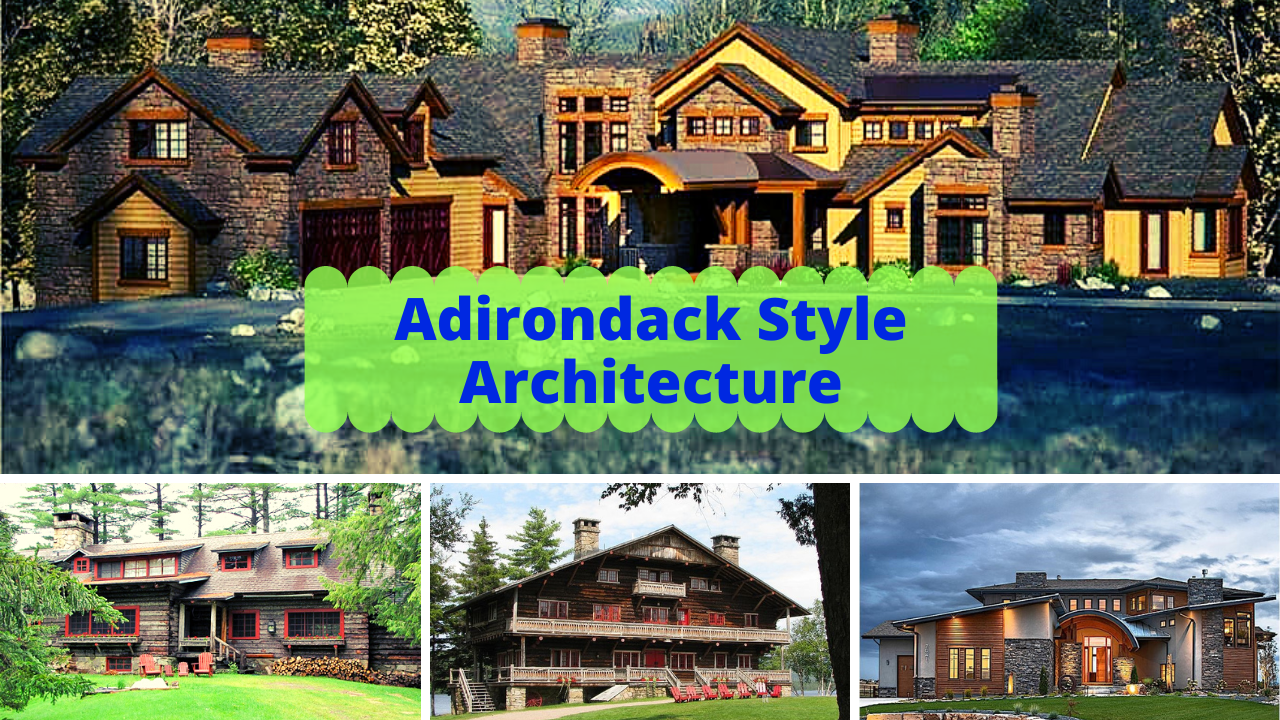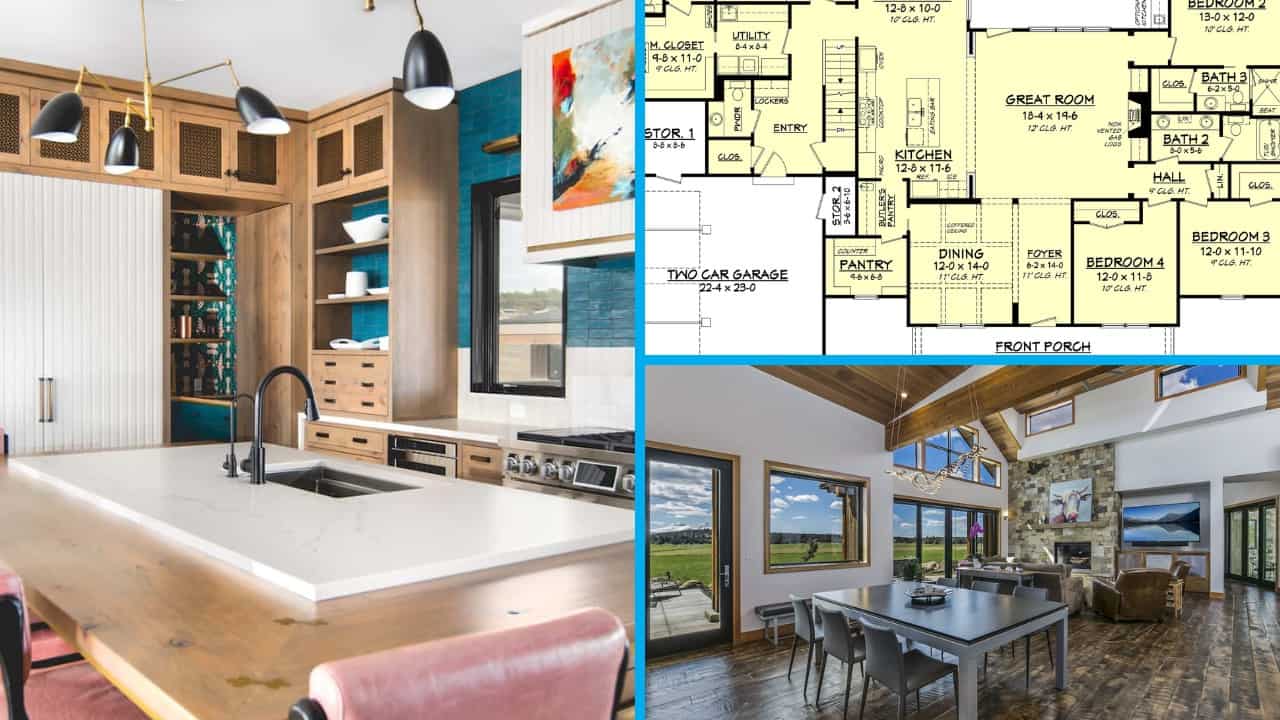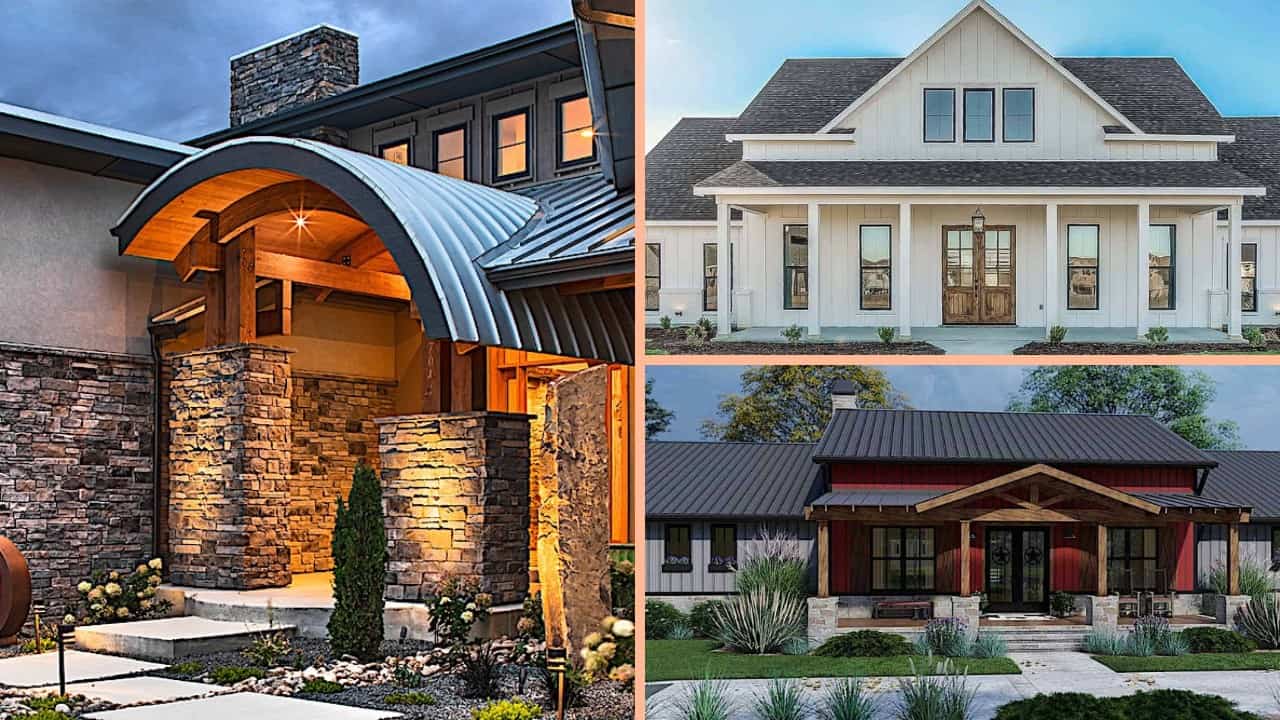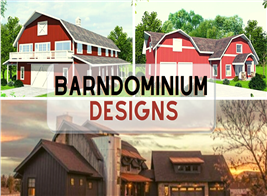Adirondack Style Architecture: A Model for Rustic Elegance and Flair
By Rexy Legaspi | Updated April 04, 2023
You Can Have Your Own Rustic, Luxurious “Great Camp”
Far from the bright lights, skyscrapers, and noise of New York City is one of the most spectacular natural attractions in New York State. The Adirondacks – located in the northeastern part of the state – is a picturesque forest preserve of breathtaking mountains, lakes, valleys, cliffs, and hiking trails.
Within the magnificent Adirondack Park – comprising more than six million acres of public and private lands – are 100 towns and villages rich in history, culture, and unique architectural styles. Among the treasures in the Adirondacks are buildings, sites, and homes constructed from every era of American architecture. There are many Greek, Roman, Italian, Georgian, Federal, Gothic, Japanese, and French architecture in the area.
There is, however, also an interesting style developed by the regions local designers and architects. With its forest lands, wilderness parks, mountains, deep bays, and lakes, the Adirondacks paved the way for creating a unique rustic architectural style that reflects the area’s history and geography and has greatly influenced the design of famous National Parks throughout the country: Adirondack style.
Let’s learn more about the origins and characteristics of this rugged style, which dates back to the late 19th century.

What is Adirondack Style?
Imagine an architectural style that blends rustic Log Cabin and Cottage styles in a luxuriously glamorous interpretation but on a massive scale, and you have a good idea of Adirondack style. In the late 1800s and early 1900s, wealthy businessmen purchased vast tracts of wilderness in the Adirondacks and wanted to build summer retreats – estates, really – for their families, but rather than a Newport, Rhode Island, style mansion, it was a large rustic home with associated outbuildings that complemented the surrounding wilderness in their rusticity … highly fashionable at the time. Thus began the "Great Camps" of the Adirondacks, self-contained settlements – rustic villages almost – for the enjoyment of extended family consisting of a dining hall, guest quarters, servants quarters, lounges, library, game rooms, boathouses, blacksmith shop, carriage houses, and even barns and farms. Think of it as an outsized 19th-century version of "glamping."
The architectural style of the buildings melded building and design styles that were popular in the mid-1800s:
• Swiss chalet style, which was popular in the U.S. during the mid-1800s
• Craftsman / Arts & Crafts movement in England
• Cottage style, a natural result of British and European influence

• Log construction
• Japanese architecture
• Stick style building, a decorative, stylized form of balloon framing


Elements of Adirondack / Great Camp Architecture
The most distinct characteristics of some Great Camps are using the terrain to hide buildings from view until you are next to them and the use of logs, rock, and bark to fashion a rustic look that matched the scenery and provided great comfort within.
Set in the wilderness of the Adirondacks, the architecture is meant to blend practicality with the natural beauty and charm of the surrounding landscape.
Other important elements:
1. Creative use of natural materials, like a log and heavy timber – gave the structures a natural appearance and avoided the expense of transporting traditional building materials into the forest lands.
2. A variety of trees for particular parts of the home. Spruce for roof boards, for example, and floors and stairs, usually birch, beech, maple, or fir.
3. Steep roofs to shed snow and wide overhangs to protect the perimeter of the building from winter snowfall and summer sun.
3. Use of native stonework, including granite
4. Massive fireplaces and chimneys
5. Twig work style, decorative rustic work in twigs and branches, in which stripped and unstripped tree branches are incorporated into a structure
6. Elaborate gable decoration
7. Self-sufficient, multi-building complexes that blend


Top: Look closely at the intricate decoration of the gables and porch railings at Metcalf Hall, one of the many structures within Camp Pine Knot. The “W” in the middle is for William West Durant, the designer, and builder responsible for much of the Adirondack/Great Camp architecture. The W and the balusters in the porch railing are configured using twig work (photo credit: Camp Pine Knot, Metcalf Hall by Mwanner under license CC BY-SA 3.0). As seen here on a boathouse at an Adirondack Great Camp, Twig-work-style construction may be one of the most recognizable traits of true Adirondack style architecture (photo credit: Closeup of Boathouse 2 by Mwanner under license CC BY-SA 3.0).
Fast forward to the 21st Century, where the Adirondack style is still very much present. This charming 1-story, 1,416-sq. ft. rustic Log Cabin style home shows off its stone and log work, decorative touches on the gables, picturesque window openings, and its harmony with its setting. The home features 3 bedrooms, 2 baths, a covered porch, and a fireplace in the living room (Plan #205-1009).
Adirondack Rustic Today
While the influence of the Adirondack style is most evident in National Park lodges like the Old Faithful Inn, Crater Lake Lodge, and others, its artistic rustic concept has been adopted across the country.
Look around neighborhoods, and you’ll see Adirondack architecture elements and touches in Arts & Crafts and Craftsman homes, ranches, cottages, log cabins, and A-frames. Like Parkitecture, which borrows heavily from its aesthetic, Adirondack architecture is now a factor in designing many of today’s contemporary homes.

Photo credit: Boathouse 2 at Topridge by Mwanner under license CC BY-SA 3.0
The boathouse shown above is a recent addition to Camp Topridge, an estate that dates from the late 1880s and was designed in the same style as the rest of the buildings on the site. The camp, which is on Upper St. Regis Lake in the Adirondacks, was originally accessible only by water and comprised 205 acres. The site is now made up of 105 acres and includes all buildings, including the main lodge and the boathouses; the other 100 acres were donated to the Adirondack Forst Preserve.
The contemporary rustic Cottage-style home (Plan #198-1079) shown in the two photos above may be a new build (top). Still, it nevertheless has many of the characteristics displayed by Adirondack style architecture. The steep roof and deep overhangs are reminiscent of the Swiss chalet style; the exposed timbers call to mind log construction; the gable embellishments and shutters are similar to Stick Style treatments, and the gracefully curved eaves are in the style of Japanese pagoda style. Inside, the Adirondacks Great Camps were all luxury, often with two-story vaulted ceilings and rustic-yet-glamorous trimmings. This Great Room (bottom) carries on that tradition with its timber vaults, large stone fireplace, and beautiful view through a virtual glass wall.
It doesnt take a lot of imagination to picture the Country style home in the four photos above as being part of a compound on the site of one of the Great Camps of the Adirondacks. Besides the homes overall style, the timbers evoke the signature log and Stick Style construction of the camp buildings. The use of stone in both the front (top photo) and rear (upper-middle photo) of the home is right in line with the camps use of locally sourced granite and other stone. The kitchen (lower middle photo) could be right out of Camp Pine Knot or Camp Topridge, with its dark wood flooring, cabinets, and ceiling beams. And what could be more "refined Adirondack" than the homes master bedroom (bottom photo), with its stone fireplace (though in this case, raised and gas-fueled), rough wood paneling behind the TV, and wood coffered ceiling – all with a great view of the outside?
A traditional appearance isnt necessary to achieve the Adirondack rustic look. Take this spectacular 2-story Contemporary style home (Plan #161-1106) shown above with an attractive exterior facade built with a combination of rock, stone, and wood – natural materials that add to its curb appeal. The 3,587-square-foot home has three bedrooms, three full bathrooms, two half baths, a welcoming front porch, and a grand entryway.
History of the Adirondack Great Camps
Three books started it all!
1. Ebenezer Emmons, a pioneering geologist who was part of an expedition in 1836 to explore the northeastern territories of New York State, named the mountains "Adirondacks." Emmonss report – or guidebook – about the region acquainted the public about the Adirondacks.
2. In 1849, Joel Tyler Headley, who served as Secretary of State of New York, wrote The Adirondack or Life in the Woods after his trips to the area. Headley’s book “promoted interest in the Adirondacks as an unspoiled wilderness and a potential health and recreational retreat.” Headley’s book was responsible for the first wave of wealthy families and entrepreneurs to explore the Adirondack wilderness and develop hotels and roads.
3. When William H.H. Murray’s Adventures in the Wilderness; Or Camp-Life in the Adirondacks was published in 1869, it built on – and expanded – the interest in the area. With the ensuing explosion of tourists to the Adirondacks, the wilderness became a favorite getaway for the wealthy. By 1875, more than 200 hotels on the shoreline of Blue Mountain Lake served thousands of overnight and weekend guests and their families.

A 6-story Queen Anne style luxury hotel with 300 rooms, Prospect House on Blue Mountain Lake opened in 1882 and was the largest hotel in the Adirondacks. It was also the first hotel to feature incandescent electric lighting in all the guest rooms – thanks to Thomas Edison, who supervised the installation of electrical items for the hotel, including two electric generators on the premises (photo by Seneca Ray Stoddard, Public Domain).
As more visitors flocked to the area and filled the hotels, the more adventurous guests looked for more than the boat rides, the promenades on the verandas, billiards, shooting galleries, golf, and lawn tennis. There was a demand for the real wilderness experience that was missing in the stylish and luxury accommodations of the hotels.
Enter the simple tent camps – often set up on land rented from hotel owners – where Adirondacks visitors enjoyed outdoor living and connected with the primitive beauty of nature. Eventually, the camps evolved into lean-tos and then into compounds of rustic cabins built on lakes or along the shores of the numerous lakes in the Adirondacks.
William West Durant and the Adirondacks
It was the passion of William West “W.W.” Durant for building that gave significance to the camps that first started as tents in the Adirondacks. Born in Brooklyn, N.Y., in 1850, he attended a school in London and had private tutors for most of his life. Durant traveled extensively in Europe and Africa and was greatly influenced by the different architectural styles in vogue in the 1860s and 1870s, particularly the Swiss Chalet style.
In 1874 – at the age of 24 – he was called home by his father, Dr. Thomas Durant, a railroad magnate who built the Adirondack Railway from Saratoga Springs to North Creek. The elder Durant needed W.W. to develop an Adirondack tourism industry. As his father expanded rail lines to transport tourists from New York City to the Adirondacks, W.W. concentrated on architectural explorations that developed into a new building design.

Not only did W.W. Durant manage to create a harmonious wilderness architecture, but he also gave the elegance and flair of the Adirondack cabin. The picturesque Swiss Chalets fusion and the rugged backwoods look started the Adirondack architecture known today as Great Camp style.
6 Great Camps of the Adirondacks
The embodiment of Adirondack architecture, the Great Camps, drew heavily from Swiss Chalet, Shingle, and Arts & Crafts styles, which inspired the architectural aesthetic credited to W.W. Durant.
Some of the magnificent Great Camps of the late 19th and early 20th centuries include the following six camps:
1. Camp Pine Knot
The first Great Camp in the Adirondacks – Camp Pine Knot – was W.W. Durant’s first “creation” in the area, a beautiful showpiece where the family entertained friends and famous people. Thomas Durant started the Camp in 1877 as a group of rough cabins on a 201-acre site at Raquette Lake. When W.W. took over the construction in 1879, he added a second story to the original home, modeled after a Swiss chalet.
By the time Durant completed the construction, Camp Pine Knot had encompassed about two dozen buildings. Among them were the seven-room Chalet, four log cottages, two frame cottages, a spacious recreational lodge called Metcalf Hall, W.W. Durant’s private cabin, a horse barn, and a wagon shed. Then there was the Barque, a 20x60-foot four-room cabin built on a log raft – equipped with a kitchen, bath, and running water. In the spring and summer months, tiny insects called black flies descended on Raquette Lake. The escape? Hence, getting out on the water – hence, the Barque, which provided a comfortable escape from the insects.
In 1895, Pine Knot was sold to railroad magnate Collis P. Huntington to settle W.W. Durant’s financial debt. It was added to the National Register of Historic Places in 1986. In 2004, Camp Pine Knot was designated a National Monument by the National Park Service.
Today, it belongs to the State of University of New York (SUNY) at Cortland, a Huntington Family gift.

W.W. Durant’s 135-year old Swiss Chalet-inspired cottage at Camp Pine Knot is mostly untouched – maintaining the original bark coverings and the wood in its interiors. One nod to modern times is electrical wiring (photo credit: Chalet, Camp Pine Knot, Raquette Lake, NY by Mwanner under license CC BY-SA 3.0).
2. Camp Uncas
After Camp Pine Knot in 1890, W.W. Durant was inspired to undertake his second Adirondack Great Camp. Designed for his own use, Camp Uncas has been described as “one of the most beautiful, authentic Great Camps, in a secluded and gorgeous setting.”
Built on the shore of Lake Mohegan in 1890 on a 1,500-acre water-fronted property, Camp Uncas was completed in two years. By 1892, there was a 20-building complex that featured the Main Lodge, two guest cabins, a boathouse with a dock, caretaker and staff quarters, and farm and other support buildings. Durant constructed Camp Uncas with resources gathered and forged on the site – like the huge spruce trees for the buildings and blocks of granite for the foundations and fireplaces.
Durant lived at Camp Uncas for about four years. But once again, financial woes beset him, and in 1896 he sold Camp Uncas to J. Pierpont Morgan. The Great Camp stayed with the Morgan family until 1947, when Margaret Emerson Vanderbilt bought the estate. Mrs. Vanderbilt left Camp Uncas to a foundation that sold it to the Rockland County Boy Scouts. In 1975, it was returned to private use.
Camp Uncas was listed on the National Register of Historic Places in 1987 and was designated a National Historic Landmark in 2008.
Just imagine this show-stopping fireplace inside Camp Uncass 20-foot ceilinged living room! The centerpiece of the Great Room in a -bedroom Rustic style home with its massive stone surround and dark wool mantel, this fireplace is perfect for any Adirondack Great Camp property (Plan #161-1108).
3. Camp Sagamore
Undeterred by his failing finances, W.W. Durant set out to build his third Great Camp – envisioned as a year-round home that embodied his concept of comfort and luxury in his own private woodsy haven.
Camp Sagamore – constructed from 1895 to 1897 – is a 27-building complex situated on 1,526 acres of forest land at Raquette Lake.
Designed on a smaller scale, Camp Sagamore’s Main Lodge had only five bedrooms, and its dining room accommodated just 12 people. However, Durant – with the help of Adirondack artisans – ensured that it was as beautifully built, furnished, and decorated as Camps Pine Knot and Uncas. In fact, it’s been described as “one of the most architecturally sophisticated and fully developed examples of its type.”
Camp Sagamore had two compounds that were set about a mile apart. The Upper, or workers, Complex featured utilitarian structures, and the Lower, or guest, Complex was designed for extensive entertaining. The Lower Complex at Camp Sagamore served as a bucolic setting where America’s wealthiest families could relax, party, and bask in the rugged backwoods of the Adirondacks.

Durant did not live long in his favorite home. Once again, financial circumstances and a family lawsuit over his mother’s estates mismanagement forced him to surrender Camp Sagamore. In 1901, Durant sold the property to Alfred G. Vanderbilt, whose family kept it until 1954.
Great Camp Sagamore is now a National Historic Landmark managed as a public trust by a non-profit educational institution.
And, incredibly, all three Great Camps designed and built by W.W. Durant according to his architectural vision are intact and restored to their former glory.
You can have your own Camp Sagamore ambiance with this attractive 2-story Craftsman home. Its gable roof, dormers, inviting wraparound porch with wood railing and wood posts that support the roof, and lush landscape adds a rustic touch to the home’s curb appeal. The 7,518-sq.-ft. the residence includes 4 bedrooms, 4.5 baths, wood and stone facade, and asphalt shingles for its roof (Plan #132-1579).
4. The Hedges on Blue Mountain Lake
The seasonal home of Civil War General Hiram B. Duryea from 1890 to 1920, the historic Hedges is a 30-building complex that sits on 12.5 acres of land at Blue Mountain Lake in Hamilton County. Originally known as the Duryea Camp when it was purchased in 1880, it was the General’s escape from New York City society.
Initial construction on the Camp’s Main Lodge – the first building erected on the property – started in 1880 and took two years to complete. The two-story wood-framed lodge has all of the traditional Adirondack style elements: natural materials, detailed woodwork, and rustic decor accents. It offers a French-inspired twist with its mansard roof.

The restored Main Lodge at The Hedges maintains its charm as it blends seamlessly with the gorgeous scenery. The wrap-around porch is anchored by thick log posts that support the French-influenced mansard roof. (photo credit: The Hedges main lodge by Mwanner under license CC BY-SA 4.0).
Several years after the completion of the Main Lodge, General Duryea added the Stone Lodge. Constructed large hand-cut stones and imported California Cyprus shingles, the Stone Lodge has a less rustic ambiance – with its oak-lined walls and floors.
In 1890, a few more buildings were added: a two-story caretaker’s cottage called the Upper Cottage, a horse barn, and a carriage house.
Its interesting to note that these buildings’ lack of indoor plumbing and electricity attracted guests when the camp was turned into a resort and renamed The Hedges on Blue Mountain Lake by the new owner – Richard J. Collins, the caretaker for Camp Sagamore under the Vanderbilt Family. In 1920 Collins bid $22,000 and acquired the entire property when Camp Duryea was auctioned off after the death of General Duryea left his estate in disarray. In May 1921, The Hedges opened formally as an Adirondack resort. It would change owners again in 1972, 2000, and 2018.
The Hedges was added to the National Register of Historic Places in 2009. In March 2018, ownership of The Hedges was transferred to The Hedges on Blue Mountain Lake (Adirondack Mountains), LLC, the Steering Committee of which continues to work with the camp’s on-site management.
5. Camp Santanoni
Regarded as the grandest of the Adirondack Great Camps at its completion in 1892–93, Camp Santanoni sits on 12,500 acres of land in Newcomb, a town south of the Adirondack High Peaks. Owned by prominent Albany banker and businessman Robert Pruyn and his wife, Anna, Camp Santanoni was designed and built by renowned architect Robert Robertson.
The Camp had three main building groups.
• The Gatehouse Complex (at the edge of Newcomb) had a gatehouse (called gate lodge) with a massive stone gateway arch, eight staff bedrooms, a caretaker’s home, barns, wagon sheds, and more.

• The Farm Complex featured barns, four farmhouses, workers cottages, stone creamery, a workshop, a chicken house, kennels, a smoke house, and service buildings. Santanoni had one of the largest family farm operations in the Adirondacks. It supplied the camp with all the meat and produced it needed.

• The Main Camp, which was about five miles from the Gatehouse, had 11 separate buildings:
Main living and dining lodge with two bedrooms upstairs;
Four sleeping cabins with six bedrooms;
Kitchen and service building with seven staff bedrooms – connected by a common roof and porch;
Boathouse, artist’s studio, workshop, ice house, another caretaker’s cottage.

In 1953, Camp Santanoni was sold to Syracuses Melvin family, who gave up the property in 1971 after the tragic disappearance of one of their grandchildren in the camp’s forest. The Melvins agreed to sell the estate to the newly formed Adirondack Conservancy Committee of the Nature Conservancy.
Camp Santanoni was eventually resold to New York State for incorporation into the State Forest Preserve. Since 1990, various groups have concerted efforts to restore the buildings and preserve them for the next generations.
In 2000, the Camp Santanoni Historic Area was officially created.
6. Camp Topridge
One of the largest and perhaps the most elaborately furnished of the Adirondacks Great Camps, Topridge was constructed over many years by various owners.
Located in Upper St. Regis Lake and originally called Camp Lathrop, it was purchased by Alvin Lathrop in 1897. The camp has been renamed and extensively modified, and expanded – starting in 1920 when it was acquired by Marjorie Merriweather Post, founder of General Foods and daughter of C.W. Post, a pioneer in the prepared food industry.
Marjorie Post expanded the property to 207 acres by adding cabins to the camp. She also began extensive renovations, especially to the Main Lodge and the Boathouse, under builder Benjamin Muncil and architect Theodore Blake.
Post’s rustic retreat comprised 68 buildings, including a fully staffed Main Lodge and private guest cabins, each with its own butler. As originally constructed, Camp Topridge could be reached only by water – via float plan or Post’s yacht at a private dock – and then, by a funicular to the Main Lodge at the top of the ridge. Among the many elaborate buildings at Camp Topridge is a Russian dacha built for Post’s third husband, Joseph Davies, who served as ambassador to the Soviet Union.
At her death in 1973, Post left Topridge to New York State, which added all but 105 acres to the Adirondack Forest Preserve, and used the property mostly as a retreat for the Governor. In 1984, the State sold Camp Topridge to Roger Jakubowski, who eventually went bankrupt – turning over the property in 1994 to developer Harlan Crow of Texas.
Changes under Crow included the demolition of five buildings replaced by new ones – like the 1995 Honeymoon Cottage, the 1997 Bavarian Cottage, and the 1998 Russian cabin, a series of octagons topped by onion domes that reflect Post’s original dacha.
Camp Topridge remains a tourist attraction in the Adirondacks and is on the National Registry of Historic Places.
The original boathouse at Camp Topridge built by Benjamin Muncil for Marjorie Merriweather Post is still around today (photo credit: Topridge Boathouse by Mwanner under license CC BY-SA 3.0).
You don’t have to live in the Northeast to appreciate the Adirondack architecture style. Its appeal transcends geographical boundaries as its rustic flair and practicality live on in today’s contemporary homes.
Footnote: The top photo in the lead image of this article is an imposing 1.5-story, 5,935-sq.-ft., 3-bedroom Transitional Farmhouse style home with rustic influences. For more details on this amazing home, go to Plan #161-1116.
































